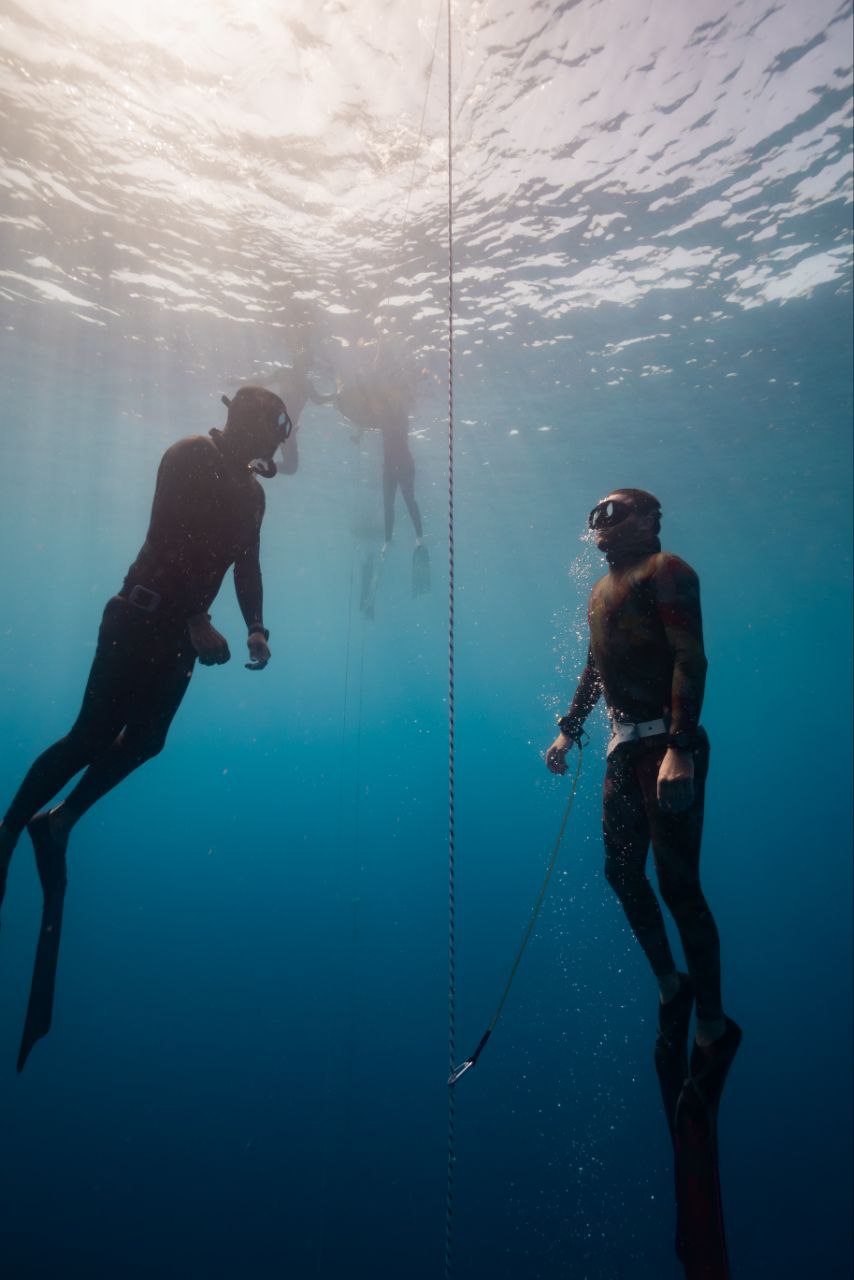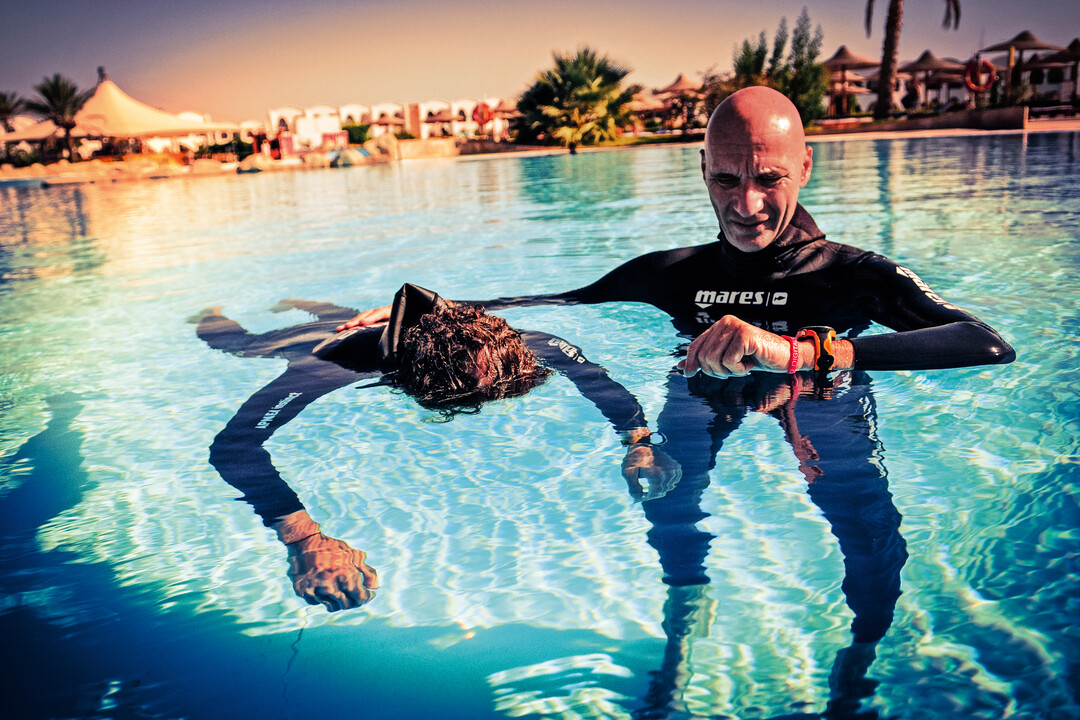Stretching and Freediving
Stretching is an important aspect of freediving, as it helps to increase flexibility, improve range of motion, and prevent injury. Here are some stretches that can be useful for freediving:
Neck stretches: Tilt your head to one side, holding for 15-30 seconds, and then repeat on the other side. Also, try rotating your head in circles to loosen up your neck.
Shoulder stretches: Cross one arm over your chest, using the opposite arm to hold it in place, and hold for 15-30 seconds. Repeat on the other side. You can also try reaching your arms overhead and interlocking your fingers, then stretching to one side and holding for 15-30 seconds before switching to the other side.
Back stretches: Lie on your back and bring your knees to your chest, hugging them in for 15-30 seconds. You can also try the “cobra” pose from yoga, which involves lying face down, placing your hands under your shoulders, and pushing up to arch your back.
Hamstring stretches: Sit with your legs out in front of you and reach for your toes, holding for 15-30 seconds. You can also try sitting with your legs crossed and reaching forward to stretch your hamstrings and back.
Hip stretches: Sit with your legs crossed and pull one knee towards your chest, holding for 15-30 seconds, then switch sides. You can also try sitting with your legs in a “butterfly” position and gently pushing your knees down towards the ground to stretch your hips.
Remember to stretch slowly and gently, and never push yourself beyond your limits. Stretching should feel good and relaxing, not painful. It’s also a good idea to warm up before stretching, such as by doing some light cardio or dynamic stretching to get your blood flowing.
Importance of stretching: Freediving involves a lot of physical demands on the body, such as breath-holding, swimming, and diving to deep depths. Stretching helps to prepare the body for these demands by increasing flexibility, range of motion, and blood flow to the muscles. It also helps to reduce the risk of injury, as tight muscles and joints are more prone to strain or tear.
Types of stretching: There are two main types of stretching: static and dynamic. Static stretching involves holding a stretch in a fixed position for a period of time, whereas dynamic stretching involves moving through a range of motion without holding the stretch in place. Both types of stretching can be beneficial for freediving, but dynamic stretching may be more suitable as a warm-up before diving.
When to stretch: Stretching can be done at any time, but it’s important to listen to your body and avoid stretching when you’re feeling fatigued or injured. It’s also a good idea to stretch before and after diving, as well as on rest days to help maintain flexibility and prevent muscle tightness.
Tips for effective stretching: When stretching, it’s important to maintain good posture and breathing, as well as to avoid bouncing or jerking movements. Instead, focus on slow, controlled movements and hold each stretch for at least 15-30 seconds. If you feel any pain or discomfort, stop immediately and consult a healthcare professional.
Stretching routines: There are many stretching routines available for freediving, ranging from short warm-up stretches to full-body stretching sequences. You can find these online or from a qualified freediving instructor or coach. It’s also a good idea to vary your stretching routine to target different muscle groups and prevent boredom or plateaus in your progress.
Stretching can provide a number of benefits for freediving, including:
Increased flexibility: Freediving requires a lot of flexibility, particularly in the shoulders, back, and hips. Regular stretching can help to improve flexibility, allowing for a greater range of motion and reducing the risk of injury.
Improved range of motion: Freediving involves a lot of twisting, turning, and reaching movements, which can be challenging if you have limited range of motion in your joints. Stretching can help to improve your range of motion, allowing you to move more freely and with greater ease.
Reduced muscle tension: Freediving can be physically demanding, which can cause muscle tension and tightness. Stretching can help to reduce muscle tension and promote relaxation, which can help to improve performance and reduce the risk of injury.
Increased blood flow: Stretching can help to increase blood flow to the muscles, which can improve oxygen and nutrient delivery and promote faster recovery after diving.
Mental benefits: Stretching can also provide mental benefits for freediving, such as reducing stress and promoting relaxation. This can be particularly important for divers who may experience anxiety or nervousness before diving.







